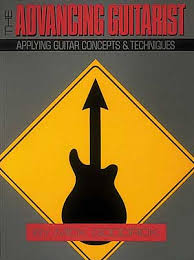The limitation exercise is a very powerful tool that at first seems counterintuitive. The basic idea is to limit your creative output to just one (or sometimes two) elements. You will put a restriction of some kind on your music. This may seem contrary to the whole creative process. Why would you restrict the options of your creative output? Isn't the whole point of divergent thinking to take many different ideas and make connections? If you exclude some ideas, how does that encourage creativity?
I think when it come to making any art, including music, there are just TOO many options. When you have the option of exploring every aspect of harmony, melody, form, rhythm, lyrics, and tone color it becomes just too much. The creative mind shuts down. Even though you have all of those options available, without restrictions you just wind up returning to the tried and true. You stick with those musical elements in which you are most comfortable. The result winds up being the opposite of breaking new creative ground.
I was first clued into this idea of limitations through clinics with John Abercrombie, the jazz guitarist. He describes a limitation exercise he took from Boston guru Mick Goodrick. Goodrick calls this exercise the science of the "unitar". Guitarists have a tendency to play very much in "position". That is their hand stays in one location and plays only the notes available on those six strings in the area of the neck. By observing Eastern musicians like sitar players, Goodrick noticed that they tend to move their hand up and down a single string to create their melodies. Goodrick then asks the questions what kind of music would you make if you had only one string: a "unitar". This exercise works for any string instrument: guitar, violin, bass, mandolin, etc.
 |
| Mick Goodrick's "The Advancing Guitarist" |
The exercise is thus: pick one string. Spend about ten minutes exploring creating melodies on just the one string. He sets up additional limitations as well. Only stick to one mode or key (you may want to keep a drone going on a lower string or other tone source). No chromaticism, just those seven notes. Bend only notes that are a half step apart. (Check out Mick's book "The Advancing Guitarist" for other great limitation exercises.)
Seems pretty strict. What can a guitar player learn through this process? Well after about ten minutes, one finds themselves playing quite differently. In a sense, your playing is more melodic. Sometimes it sounds more like Eastern music. But for those ten minutes all the guitarist must focus on is ONE mode, ONE string and that is it. There is no worry about making changes, playing hot licks, or playing many notes.They can now explore other elements that are often neglected: dynamics, rhythmic motives, tone color, expression, articulation, and even silence.
Just creating a limitation exercise won't necessarily result in a masterpiece. It is often just an exercise. A way of practice. A method to let the muse explore every nook and cranny of that particular limitation. As a result, these limitations can bring about more freedom.
They next steps would be to:
- try the other strings
- try the other modes/keys
- play it through a chord progression (or a tune)
- add chromaticism
- combine two strings (adjacent or non-adjacent)
- use only one finger
- use all four fingers
- use both hands (tapping)
- change tone color
- come up with other additions on your own
Each of these additions can be added gradually on an as needed basis. Avoid the temptation to go through them all at once. This can be a concept you come back to for years to come. Each time you want to explore a fresh way of playing, revisit this or any of the other limitations we will explore in the future blogs.
Non-string players don't fret (ugh!). We will explore limitations that will work for you as well. For right now, try to think of a limitation you can apply to your instrument/voice. It doesn't have to be just a limitation on technique either. There are many musical limitations you can impose as well.

No comments:
Post a Comment